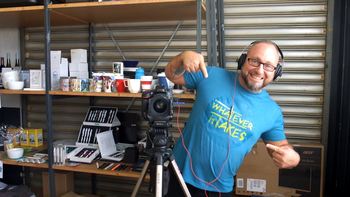
What makes for a good promotional item?
 It's hard to imagine promotional gifts not being included as part of the marketing mix; they are after all the ideal way of amplifying the brand message which you are trying to get across. Advertisers put their faith in this medium and revenues climb steadily. But what is actually a good promotional item?
It's hard to imagine promotional gifts not being included as part of the marketing mix; they are after all the ideal way of amplifying the brand message which you are trying to get across. Advertisers put their faith in this medium and revenues climb steadily. But what is actually a good promotional item?If you are asking yourself this question, you may first of all be struggling with the term itself. Descriptions such as "hapticals" are after all more fitting – promotional items as haptical brand ambassadors. They allow the company logo to be positioned on giveaways, merchandise articles and also on the company's own clothing, corporate fashion.
In recent years, promotional items have traditionally been given out as presents, above all at Christmas and Easter. These occasions are increasingly losing significance, however, in favour of trade fairs, company events and customer visits. Advertisers can even choose the occasion for themselves as a way of expressing their appreciation to their business partners and customers.
With its versatility and its effectiveness in terms of advertising impact, the promotional article is an element of the marketing mix that simply cannot be dispensed with. This can be seen in the impressive sales volumes of EUR 3.5 billion in the year 2017 alone, with the trend still rising. Almost every large company makes use of this means of advertising. This is firstly because of the greater level of trust that people have in haptic advertising as opposed to digital advertising where the reach is often difficult to comprehend or may even be faked. Furthermore, there is a trend in the industry towards cheaper articles, produced in larger numbers, however, leading to an increase in overall turnover.
To be most effective, promotional articles should in the ideal case not be used in a stand-alone scenario but rather integrated in terms of strategy and concept into an overall advertising campaign. They can be used to enhance the advertising impact of every other medium used in transporting the brand message to the recipient. In particular in times of fast-moving, digital media, they are literally a medium that stays with the customer and secures positive attention for the brand value. For this reason, they are even more popular than online and print advertising with those making decisions on budgets. According to various different studies, brand recall increases by 78% on contact with a promotional item in comparison to only 30% achieved in each case through radio and magazines. At the same time, studies have shown that people find promotional items the least annoying, and yet they can't be simply clicked away either.
According to consumer psychologists, gifts are a form of "supercommunication" – in psychological terms, they are seen as being of superior value. Promotional gifts are the only type of advertising that the customer actually thanks you for.
A crucial point in making a selection is to ensure that the promotional material is well-suited to the company and to the target group. This is an area where suppliers and traders can let their creativity run free, of course taking into account current trends in retailing and the general Zeitgeist. Something already mentioned is the trend towards lower-priced articles on account of tightened-up compliance regulations which stipulate what items an employee is allowed to accept. The clever marketing representative will understand how to choose a witty article that will get a lot of attention rather than opting for something more expensive.
One of our suppliers gave us a simple and concise answer to the question as to what makes a good promotional item – it has a use. Only a promotional item which has a practical function will have a long life and be used in a sustained fashion, making it effective in spreading its message. The more value a promotional gift is perceived to have and the more useful it is, the more positively the company will be rated and the more often the advertising message will be seen.
A study has shown that 90% of purchasers and marketing representatives between the ages of 25 and 46 get their information via the social media activities of the supplier, and 84% via the website; thank you for reading and watching :)




